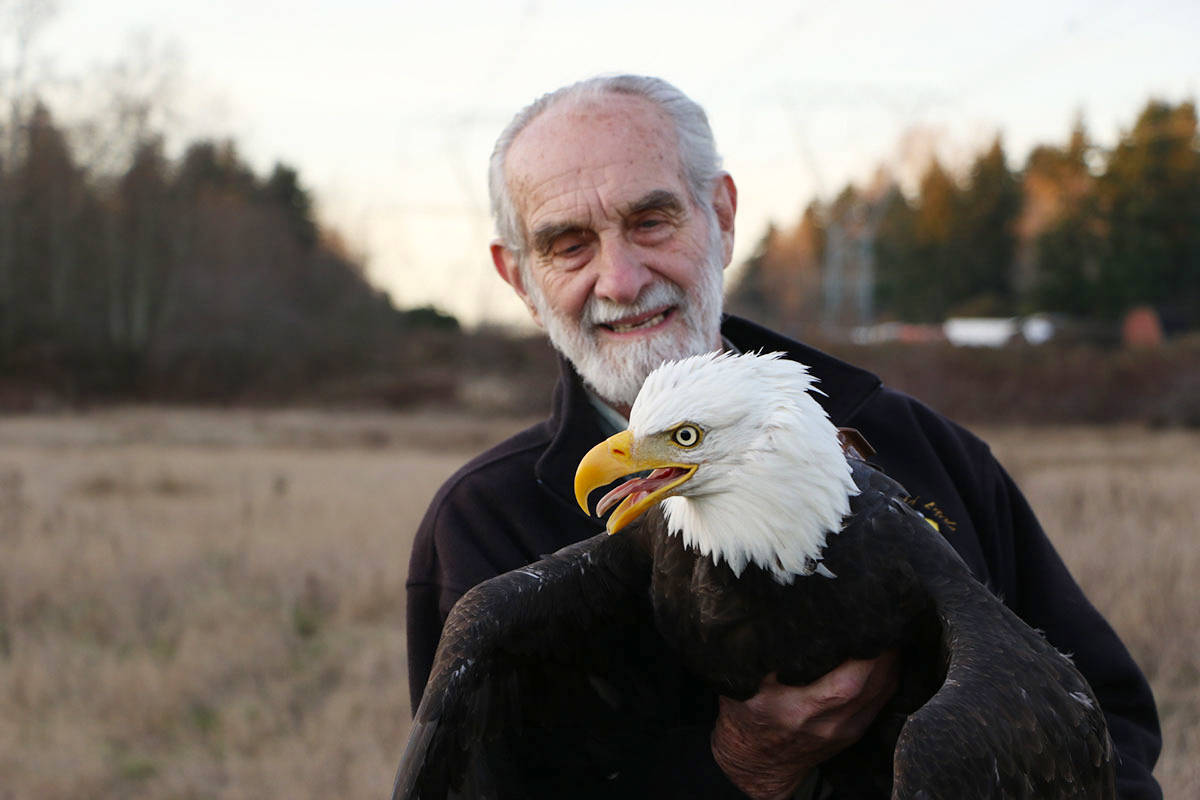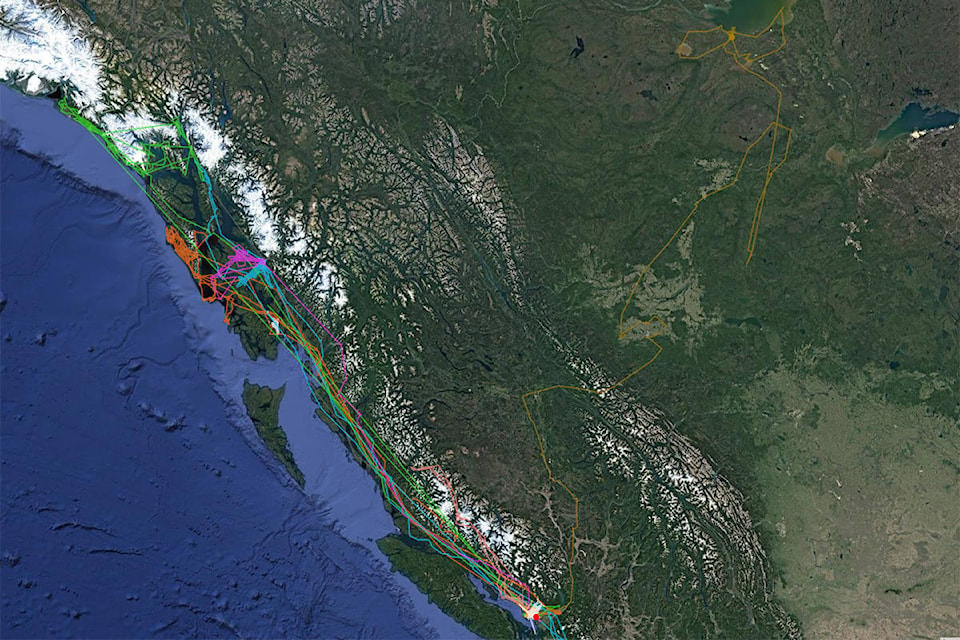The eagles have landed, and now you can see exactly where.
Last year, the David Hancock Wildlife Foundation captured 10 eagles and equipped them with a GPS tracker.
After months of data collection, residents can now track the bald eagles – with daily updates – on the Handcock Wildlife Foundation website.
For the first time, residents can view a map that gives a glimpse into the daily life of a bald eagle, which can come with some unexpected revelations.
Although Hancock’s interest is in tracking local birds – as opposed to northern breeders – he said it’s impossible to tell where a bird calls home at the time of its capture.
The majority of the birds he’s tracked so far are northern breeders, which are easily recognizable by the flight patterns highlighted on the map.
The map shows a certain commonality among flight patterns, however, there are tidbits of interesting information to be picked up along the way.
An example, Hancock told Peace Arch �������� Wednesday, is that a few birds prefer to make a pit-stop at Stuart Island, which is located off the east coast of Vancouver Island, on the way to Alaska.
Why this particular location, and not one the 40,000 other islands along the route, is one of the questions Hancock hopes to answer with the new data.
But not all the birds he’s captured are Alaskan breeders. One that’s of particular interest, Hancock said, is a local bird that now goes by the name BACA03.
BACA03 is a Surrey bird that was injured, rehabilitated, banded and released seven years ago by OWL Rehab.
That bird, Hancock believes, is now the partner of the female that was nesting at the corner of Croydon Drive and 20 Avenue before the nest was illegally cut down last year. The nest has since been rebuilt in the same general area.
RELATED:
The female eagle’s former partner, Hancock said, has disappeared.
“If you look at BACA03 for just a day of messaging or a month of messaging, it’s kind of telling,” Hancock said. “That bird is in and out of its nest every few hours. If you take only a day’s look, you can see it’s basically spending its time in and around that area. Now that its got young, it doesn’t seem to be doing that much. It’s getting enough food in a four- to five-mile radius of the nest.”
| Flight pattern of South Surrey-based bald eagle BACA03. |
Another particularly interesting eagle, which clearly shows a different flight pattern compared to the other nine Hancock has caught, is TERF05.
TERF05 was a sub-adult captured Feb. 14 last year at the Vancouver Landfill in Delta. The bird was the first one was tagged by Hancock to leave the Fraser Valley.
Instead of heading to Alaska like the northern breeders, this bird took an obscure route, zig-zagging all the way to Hay River in N.W.T., where it died.
Hancock said he contacted a group of naturalists in the area, and they spent three weekends looking for the eagle’s body – and the $2,400 transmitter – to no avail.
“It’s my guessing that he was going to the basic region in which he was brought up,” Hancock said. “I suspect he came from somewhere around Hay River, that’s why he didn’t go any further. They do return to the general region when they mature.”
| Flight pattern of TERF05, a bald eagle that travelled to Hay River, where it eventually died. |
The question for the ages, one that Hancock has been asking himself for the past 65 years, is how do these birds find their way home? Particularly without the help of a coastline to follow.
“What is it? What are the clues these birds are using? Personally, I think a lot of it is they learn geography. They have a built in tendency to go north to where they came from and, on top of that, they see other birds feeding.”
Hancock used an example of bird-watching off the coast of Vancouver Island.
If an eagle notices a school of herring, and flies with intention towards the fish, it’s only a matter of minutes before dozens of eagles join the feeding frenzy – despite there only being very few nests nearby.
“Where the hell did they arrive from?”
Hancock said eagles are aware of other eagles’ movement, particularly if a nearby eagle is flying with intent. Intentional movement, Hancock said, is a sure sign that that bird is flying towards food.
“They observed intentional movement, they know that the other eagle is moving towards food so I’m going to bloody well go because there will be food,” Hancock said.
“Pretty soon, you’ve got eagles who have never seen this herring ball until they get close. They moved in eight, 10, 15 to 20 miles just by observing the action of other eagles.”
Hancock said the Fraser Valley is the “centre of the world’s action of eagles,” and that “we’re only beginning to appreciate how far they come from and where they go. We don’t really know.”
Hancock said he would like to track up to 100 birds, but at $2,400 a pop, it’s an expensive operation. He said he relies on donations, through his website, for the project.
“Catching the birds is not the trouble.… The trouble is that it costs a lot of money to put these trackers on. While the information is awesome, you also have to get something else that’s awesome, which is money to buy them.”
To view the eagle tracker, and find more information about each bird that’s tracked, go to
aaron.hinks@peacearchnews.com
Like us on and follow us on




